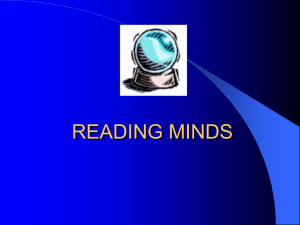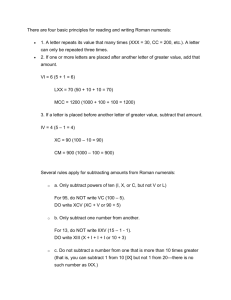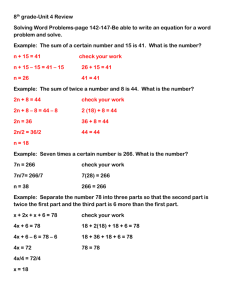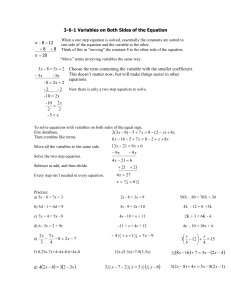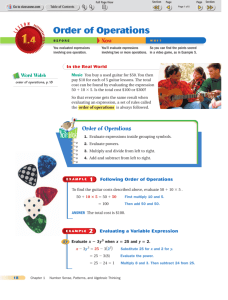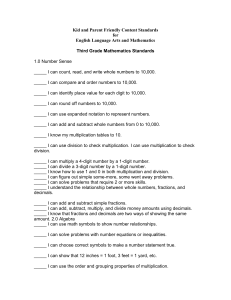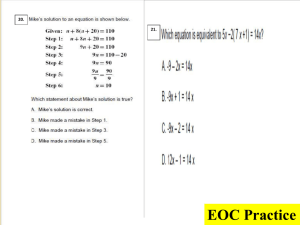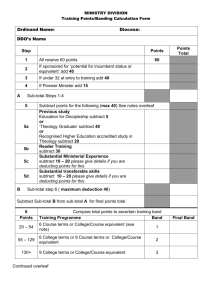Problem 1-1
advertisement
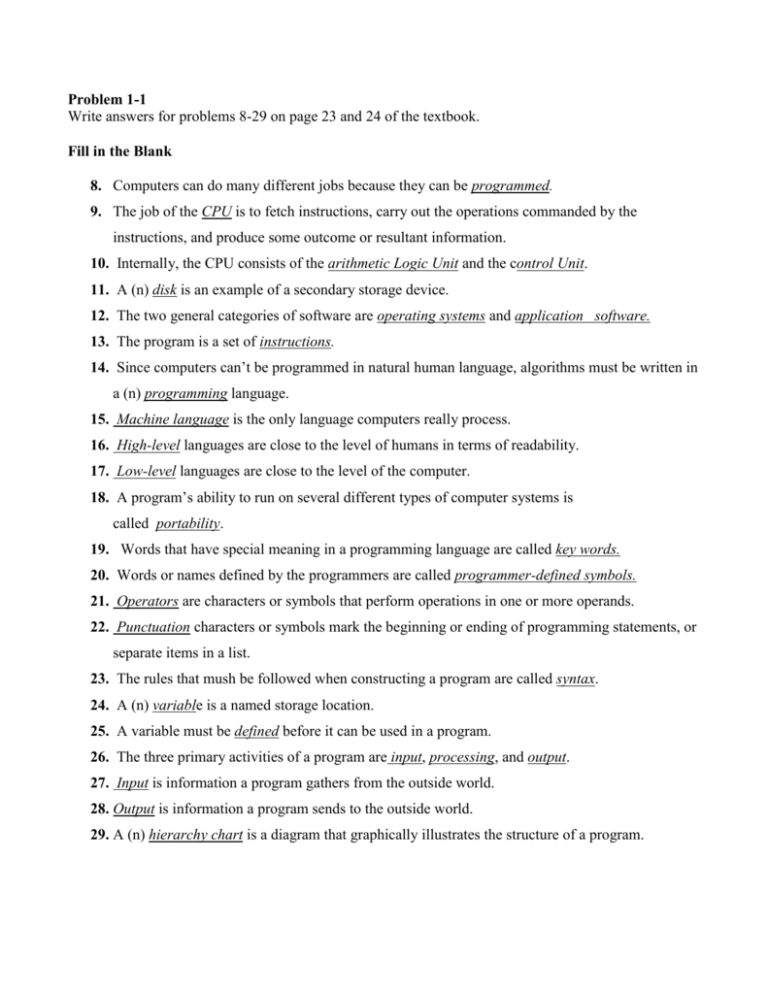
Problem 1-1 Write answers for problems 8-29 on page 23 and 24 of the textbook. Fill in the Blank 8. Computers can do many different jobs because they can be programmed. 9. The job of the CPU is to fetch instructions, carry out the operations commanded by the instructions, and produce some outcome or resultant information. 10. Internally, the CPU consists of the arithmetic Logic Unit and the control Unit. 11. A (n) disk is an example of a secondary storage device. 12. The two general categories of software are operating systems and application software. 13. The program is a set of instructions. 14. Since computers can’t be programmed in natural human language, algorithms must be written in a (n) programming language. 15. Machine language is the only language computers really process. 16. High-level languages are close to the level of humans in terms of readability. 17. Low-level languages are close to the level of the computer. 18. A program’s ability to run on several different types of computer systems is called portability. 19. Words that have special meaning in a programming language are called key words. 20. Words or names defined by the programmers are called programmer-defined symbols. 21. Operators are characters or symbols that perform operations in one or more operands. 22. Punctuation characters or symbols mark the beginning or ending of programming statements, or separate items in a list. 23. The rules that mush be followed when constructing a program are called syntax. 24. A (n) variable is a named storage location. 25. A variable must be defined before it can be used in a program. 26. The three primary activities of a program are input, processing, and output. 27. Input is information a program gathers from the outside world. 28. Output is information a program sends to the outside world. 29. A (n) hierarchy chart is a diagram that graphically illustrates the structure of a program. Problem 1-2 Draw a hierarchy chart for problem 31 on page 24 of the textbook. Hierarchy Chart: Calculate a retail sale Calculate and display Get Input. Read retail price. Read tax rate. sales tax. Multiply retail price by tax rate. Store result in tax. Display tax. Calculate and display sales tax. Add tax to retail price. Store result in total. Display total. Problem 1-3 Find the error for problem 36 on page 26 and rewrite the pseudocode. The error is that the program performs its math operation before the user has entered values for the variable length and width. Problem 1-4 Write an algorithm to calculate the change remaining from a dollar after a purchase is made. Assume that the cost of the goods purchased is less than a dollar. The change is received should consist of the smallest number of coins possible. a. Step 1: Multiply the purchase amount by 100. Step 2: Subtract the result in 1 from 100. Call this amount CHANGE. Step 3: If CHANGE >=50 then Step 3a: Subtract 50 from CHANGE Step 3b: Write down “One half dollar” Step 4: If CHANGE >=25 then Step 4a: Subtract 25 from CHANGE Step 4b: Write down “ One quarter” Step 5: If CHANGE >=10 then Step 5a: Subtract 10 from CHANGE Step 5b: Write down “One dime” Step 6: Repeat Step 5 once Step 7: If CHANGE >=5 then Step 7a: Subtract 5 from CHANGE Step 7b: Write down “One nickel” Step 8: If CHANGE >=1 then the number of pennies equals the value of CHANGE

